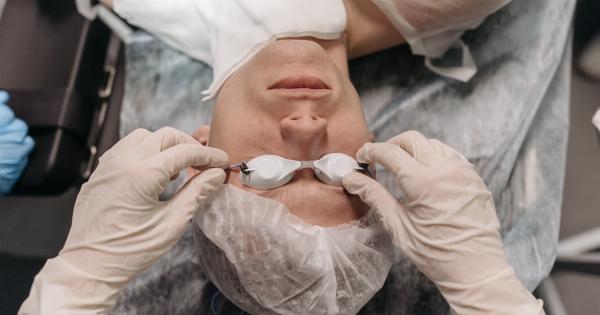Hip arthroplasty, also known as hip replacement surgery, is a common procedure used to treat severe hip pain and restore mobility for individuals with hip joint damage or arthritis.
While hip arthroplasty is highly effective in relieving pain and improving function, it is still a major surgery with potential risks and complications. For some patients, alternative treatments may be considered as a conservative approach before resorting to surgical intervention.
This article explores several alternative treatments to hip arthroplasty that can help manage hip pain and improve hip function.
Physical Therapy
Physical therapy is often recommended as a first-line treatment for hip pain.
It involves a range of exercises and stretches specifically designed to strengthen the muscles surrounding the hip joint, improve flexibility, and enhance overall joint function. Physical therapists may also incorporate other modalities such as heat or cold therapy, ultrasound, or electrical stimulation to help reduce pain and inflammation.
Physical therapy can be particularly beneficial for individuals with conditions like osteoarthritis or mild hip impingement.
Weight Management
Excess body weight can significantly contribute to hip joint pain and accelerate joint degeneration. Maintaining a healthy weight can help reduce the load and stress placed on the hip joint, thus alleviating pain.
Losing weight through a combination of healthy eating and regular exercise can have a positive impact on hip pain. Physical therapists and nutritionists can provide guidance in developing appropriate exercise programs and healthy diet plans to support weight management.
Medication and Injections
Nonsteroidal anti-inflammatory drugs (NSAIDs) are commonly used to manage hip pain caused by inflammatory conditions like arthritis. These medications help reduce pain and inflammation in the hip joint.
In some cases, corticosteroid injections may be recommended to provide short-term relief from hip pain. These injections are delivered directly into the hip joint to help decrease inflammation and alleviate discomfort.
However, it is important to note that medication and injections only offer temporary relief and do not address the underlying cause of hip pain.
Regenerative Medicine
Regenerative medicine techniques, such as platelet-rich plasma (PRP) therapy or stem cell therapy, have gained popularity as alternative treatments for hip pain.
PRP therapy involves injecting concentrated platelets from the patient’s blood into the hip joint to promote tissue regeneration and healing. Stem cell therapy, on the other hand, involves the injection of stem cells that can potentially differentiate into various types of cells, aiding in tissue repair and regeneration.
While these treatments show promise, more research is needed to determine their long-term effectiveness.
Acupuncture
Acupuncture is an ancient Chinese practice that involves inserting thin needles at specific points on the body. It is believed to stimulate the body’s natural healing processes and promote pain relief.
Some individuals with hip pain report improvements in pain and mobility after acupuncture sessions. While the underlying mechanisms of acupuncture are not yet fully understood, it is considered a safe and relatively non-invasive alternative treatment option for hip pain.
Chiropractic Care
Chiropractic care focuses on the diagnosis and treatment of mechanical disorders of the musculoskeletal system, particularly the spine. However, chiropractors can also provide adjustments and manipulations to other joints, including the hip.
By improving joint alignment and reducing joint stiffness, chiropractic care can potentially alleviate hip pain and improve hip function. It is important to consult with a qualified and licensed chiropractor to determine if this treatment option is suitable for your specific hip condition.
Cognitive-Behavioral Therapy (CBT)
Cognitive-behavioral therapy (CBT) is a psychological treatment approach that aims to change negative thoughts and behaviors associated with pain, ultimately helping individuals better cope with chronic pain.
CBT can be particularly helpful for individuals experiencing persistent hip pain that impacts their overall well-being and quality of life. Through techniques such as relaxation training, cognitive restructuring, and activity pacing, CBT can empower individuals to manage their pain more effectively and reduce the reliance on pain medication.
Assistive Devices
Assistive devices, such as canes or crutches, can be beneficial for individuals with hip pain. These devices help redistribute weight away from the affected hip joint, reducing pain and improving stability during walking or weight-bearing activities.
Additionally, using assistive devices can help prevent further damage to the hip joint and delay the need for surgical intervention. It is important to consult with a healthcare professional to determine the most appropriate type of assistive device and receive guidance on proper usage.
Complementary and Alternative Medicine
In addition to the aforementioned treatments, there are various complementary and alternative medicine approaches that individuals may consider for hip pain relief.
These include herbal supplements, such as glucosamine and chondroitin sulfate, which are believed to support joint health. Other techniques like massage therapy, yoga, or tai chi may also provide temporary pain relief and improve overall well-being. It is important to consult with healthcare professionals and experts in these fields to ensure safety and effectiveness.
Lifestyle Modifications
Adopting certain lifestyle modifications can contribute to hip pain management and improve overall hip function.
This can include avoiding activities that exacerbate hip pain, modifying daily activities to reduce stress on the hip joint, and practicing proper posture and body mechanics. Engaging in low-impact exercises like swimming or biking can also help maintain joint mobility and strengthen the muscles around the hip.
Working closely with healthcare professionals can provide guidance in making appropriate lifestyle modifications tailored to individual needs.
Conclusion
While hip arthroplasty is an effective solution for severe hip pain and joint deterioration, exploring alternative treatments can be a reasonable option in some cases.
Physical therapy, weight management, medications, regenerative medicine, acupuncture, chiropractic care, cognitive-behavioral therapy, assistive devices, complementary and alternative medicine, and lifestyle modifications are all potential alternatives to hip arthroplasty. However, it is important to consult with healthcare professionals to determine the most suitable treatment plan based on individual circumstances and the underlying cause of hip pain.






























